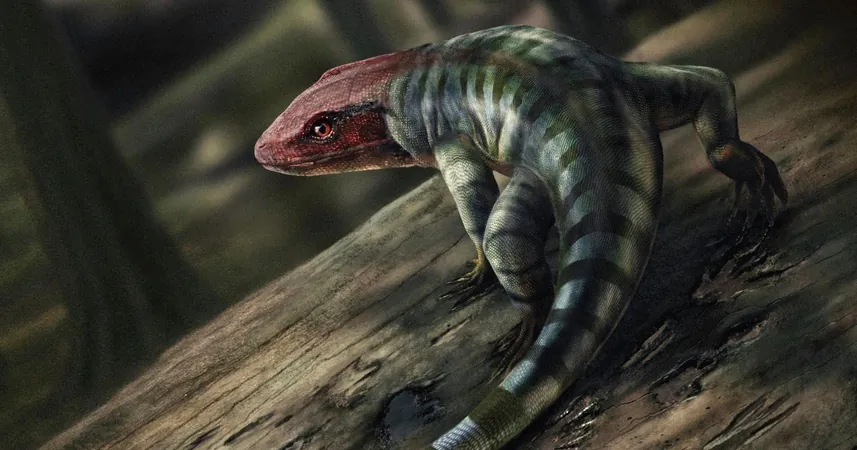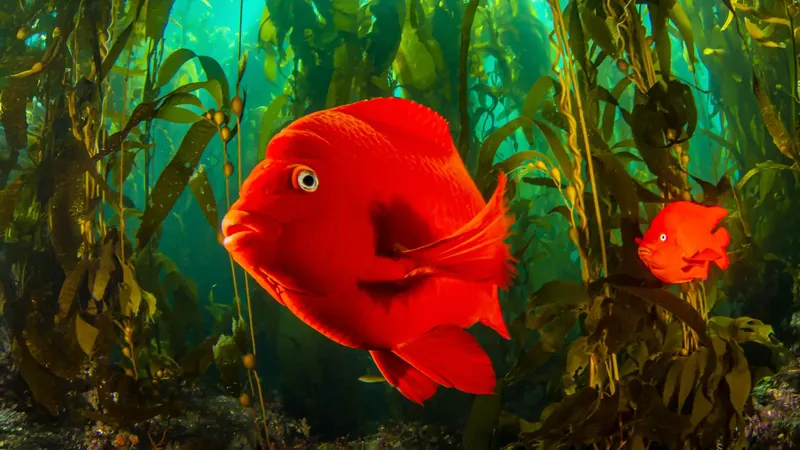
Stunning Discovery of Ancient Reptile Footprints Changes Our Understanding of Evolution
2025-05-14
Author: Emily
Oldest Reptile Footprints Found in Australia
In a groundbreaking revelation, scientists in Australia have unveiled the oldest known fossil footprints of a reptile-like creature, estimated to be around 350 million years old. This incredible discovery challenges previous beliefs about the timeline of animal evolution from ocean to land.
Rapid Transition from Sea to Land
Research indicates that the transition from aquatic life to terrestrial habitats occurred much more swiftly than experts have long assumed. California State University paleontologist Stuart Sumida, who wasn’t involved in the research, remarked, We had thought the transition from fin to limb took much longer. Previously, the only known reptile footprints dated back to 318 million years ago, found in Canada.
Unique Features of the Footprints
Discovered on a slab of sandstone near Melbourne, the ancient footprints display distinct reptilian features, including long toes and hooked claws. The creature itself was likely about 2.5 feet (80 centimeters) long and bore resemblance to today’s monitor lizards. These findings were showcased in the latest issue of *Nature*.
Significance of Clawed Feet
Study co-author Per Ahlberg, a paleontologist at Uppsala University in Sweden, highlighted the importance of the claws: It’s a walking animal, he stated. Unlike early vertebrates like fish and amphibians that retained a dependency on water for reproduction, the lineage that led to modern reptiles, birds, and mammals—known as amniotes—developed claws suited for life on land.
A Glimpse into Prehistoric Life
The environment where this ancient reptile roamed was a hot, humid landscape filled with sprawling forests, as Australia was part of the supercontinent Gondwana at that time. According to Ahlberg, the fossilized trackways portray a vibrant snapshot of a single day in prehistoric life: one reptile scurried across the ground, leaving tracks that were briefly interrupted by rain, followed by two others heading in the opposite direction before their paths were sealed by sediment.
Footprints: A Window into the Past
John Long, another co-author and paleontologist at Flinders University, expressed the unique insight offered by fossil trackways: Fossil trackways are beautiful because they tell you how something lived, not just what something looked like. This discovery not only sheds light on the adaptability of early reptiles but also reshapes our understanding of evolution as a much quicker process than once thought.









 Brasil (PT)
Brasil (PT)
 Canada (EN)
Canada (EN)
 Chile (ES)
Chile (ES)
 Česko (CS)
Česko (CS)
 대한민국 (KO)
대한민국 (KO)
 España (ES)
España (ES)
 France (FR)
France (FR)
 Hong Kong (EN)
Hong Kong (EN)
 Italia (IT)
Italia (IT)
 日本 (JA)
日本 (JA)
 Magyarország (HU)
Magyarország (HU)
 Norge (NO)
Norge (NO)
 Polska (PL)
Polska (PL)
 Schweiz (DE)
Schweiz (DE)
 Singapore (EN)
Singapore (EN)
 Sverige (SV)
Sverige (SV)
 Suomi (FI)
Suomi (FI)
 Türkiye (TR)
Türkiye (TR)
 الإمارات العربية المتحدة (AR)
الإمارات العربية المتحدة (AR)